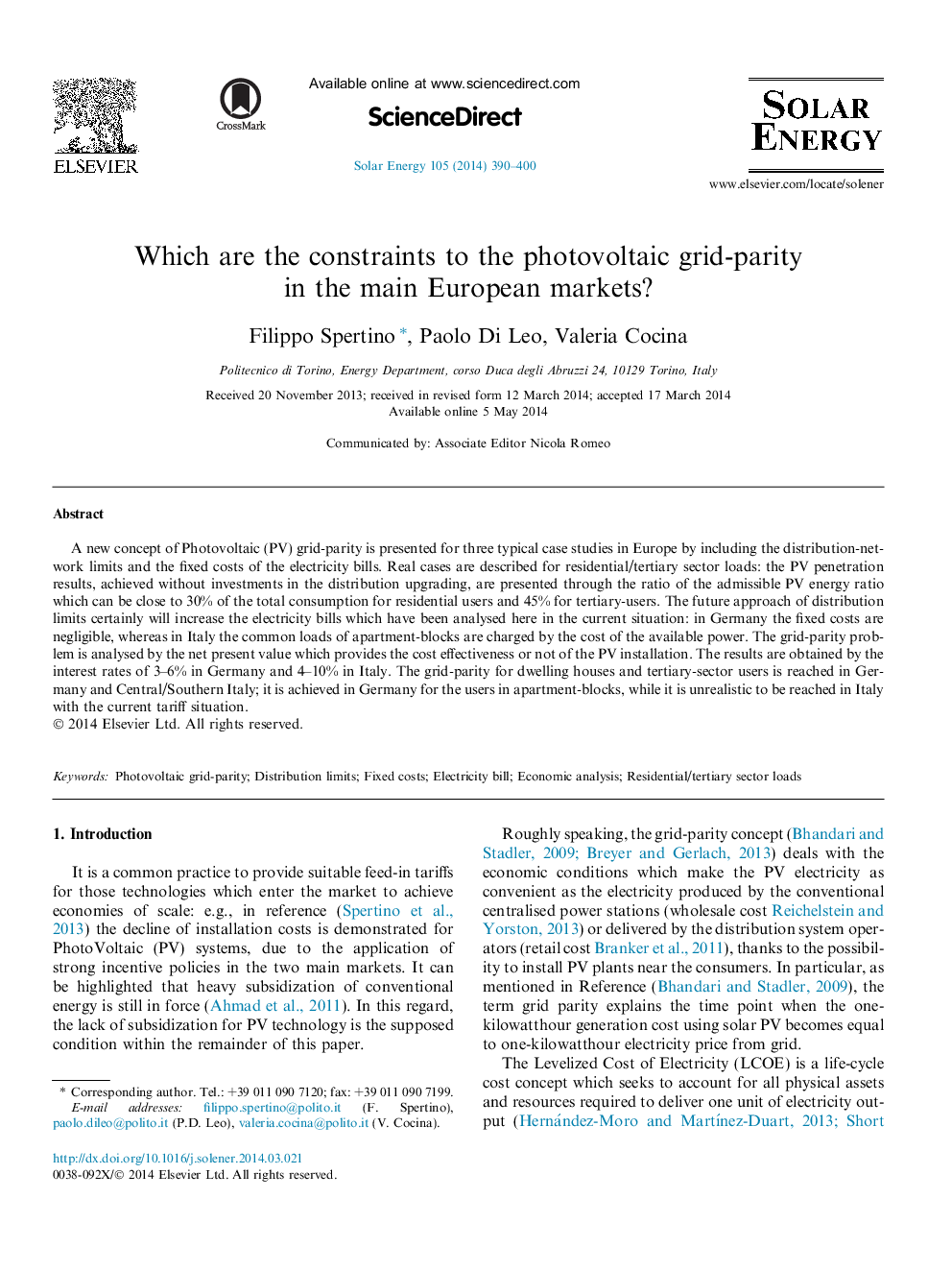| Article ID | Journal | Published Year | Pages | File Type |
|---|---|---|---|---|
| 1550062 | Solar Energy | 2014 | 11 Pages |
•The photovoltaic penetration in the distribution grids is subject to technical limits.•The distribution-grid upgrading with high level of PV penetration increases the tariff.•The fixed costs in the tariff must be included in the analysis of PV grid parity.•The PV grid parity is reality in Germany for commercial and residential users.•The PV grid parity is impossible in Italy for apartment-blocks with the current tariff.
A new concept of Photovoltaic (PV) grid-parity is presented for three typical case studies in Europe by including the distribution-network limits and the fixed costs of the electricity bills. Real cases are described for residential/tertiary sector loads: the PV penetration results, achieved without investments in the distribution upgrading, are presented through the ratio of the admissible PV energy ratio which can be close to 30% of the total consumption for residential users and 45% for tertiary-users. The future approach of distribution limits certainly will increase the electricity bills which have been analysed here in the current situation: in Germany the fixed costs are negligible, whereas in Italy the common loads of apartment-blocks are charged by the cost of the available power. The grid-parity problem is analysed by the net present value which provides the cost effectiveness or not of the PV installation. The results are obtained by the interest rates of 3–6% in Germany and 4–10% in Italy. The grid-parity for dwelling houses and tertiary-sector users is reached in Germany and Central/Southern Italy; it is achieved in Germany for the users in apartment-blocks, while it is unrealistic to be reached in Italy with the current tariff situation.
